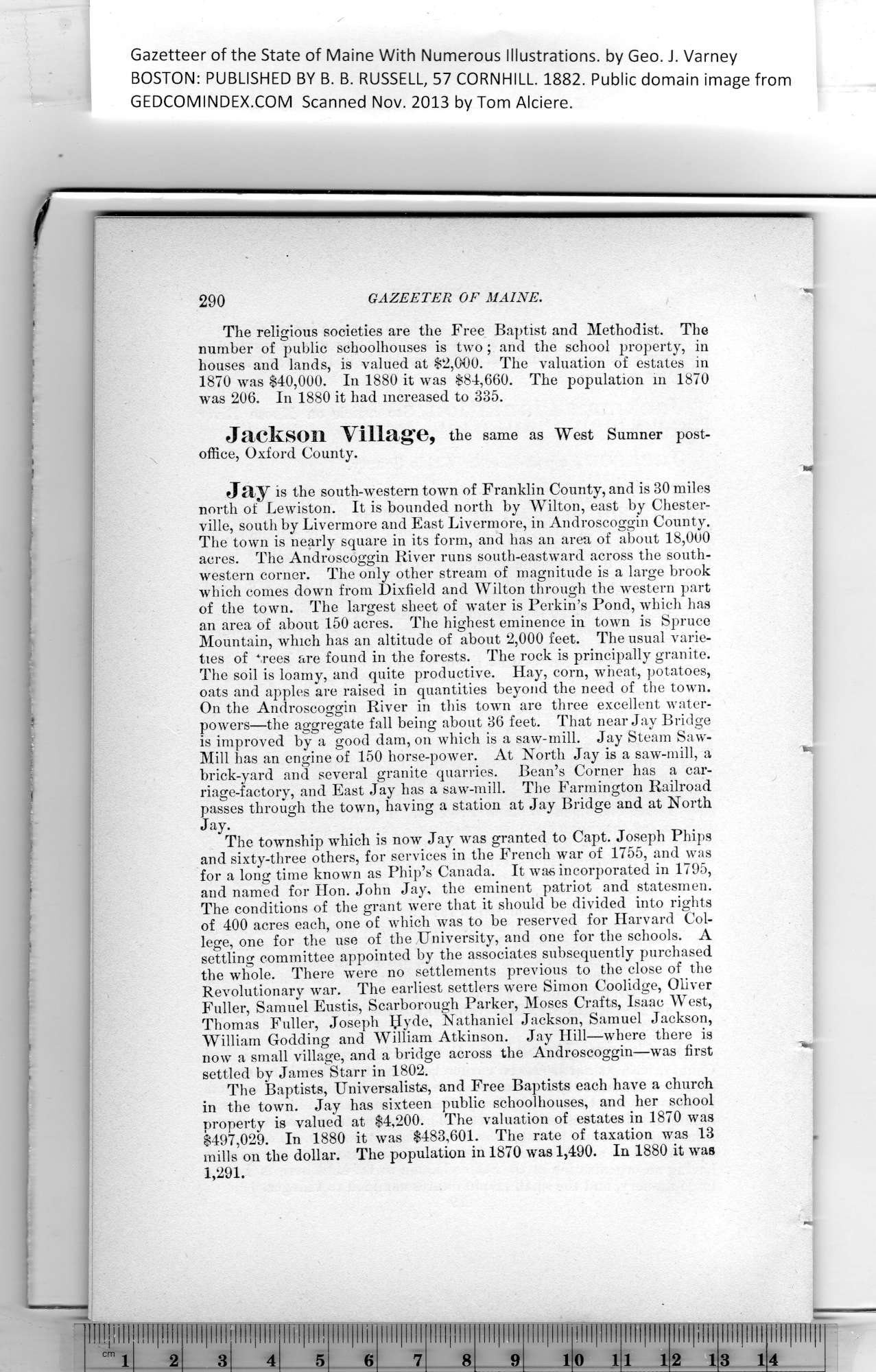Click on the image to view a larger, bitmap (.bmp) image suitable for printing. HOME PAGE ... REFERENCE PAGE ... THIS GAZETTEER’S PAGE |

Click on the image above for a larger, bitmap image suitable for printing.
|
Gazetteer of the State of Maine With Numerous Illustrations, by Geo. J. Varney BOSTON: PUBLISHED BY B. B. RUSSELL, 57 CORNHILL. 1882. Public domain image from 290 GAZEETER OF MAINE. • The religious societies are the Free Baptist and Methodist. The Jackson Village, the same as West Sumner post- 'm Jay is the south-western town of Franklin County, and is 30 miles The town is nearly square in its form, and has an area of about 18,000 The soil is loamy, and quite productive. Hay, corn, wheat, potatoes, On the Androscoggin River in this town are three excellent water- powers—the aggregate fall being about 36 feet. That near Jay Bridge is improved by a good dam, on which is a saw-mill. Jay Steam Saw- Mill has an engine of 150 horse-power. At North Jay is a saw-mill, a ^ brick-yard and several granite quarries. Bean’s Corner has a car- riage-factory, and East Jay has a saw-mill. The Farmington Railroad passes through the town, having a station at Jay Bridge and at North Jay. The township which is now Jay was granted to Capt. Joseph Phips The conditions of the grant were that it should be divided into rights Thomas Fuller, Joseph IJyde, Nathaniel Jackson, Samuel Jackson, William Godding and William Atkinson. Jay Hill—where there is ___ now a small village, and a bridge across the Androscoggin—was first The Baptists, Universalists, and Free Baptists each have a church PREVIOUS PAGE ... NEXT PAGE This page was written in HTML using a program written in Python 3.2 |